Kilchoman Distillery – The Farmhouse
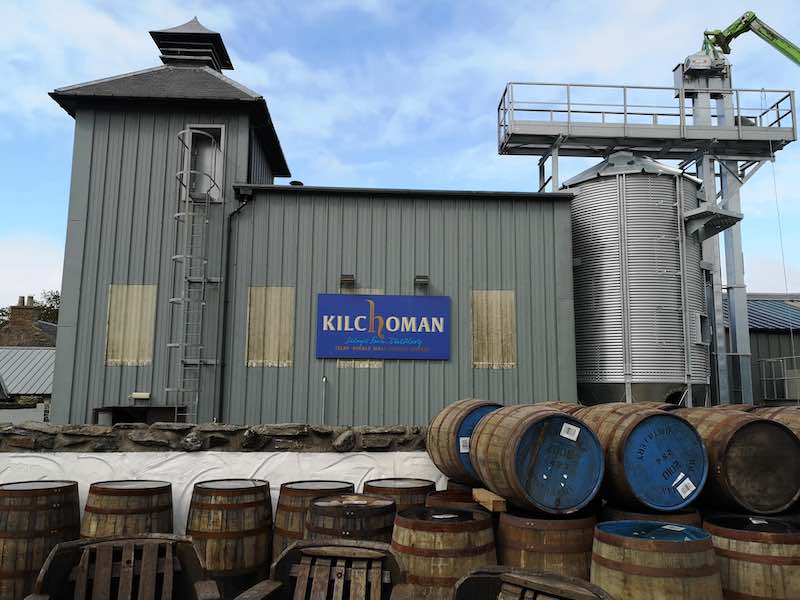
Kilchoman Distillery
Two team members from WhiskyGeeks went on an Islay-centric Scotland tour in September 2019 and we had a whale of a time! Coming back from Scotland was torturous, but such is life! It took us many months to get our bum to settle down in front of our computers to start writing, but here we are, finally!
Let’s start our journey with Kilchoman, the second newest distillery on Islay. The distillery started distillation in 2005 and have since expanded their production to 220 thousand litres of pure alcohol a year! New washbacks and stills will be installed soon, and we can expect increased production after that.
Going on a Distillery Tour
It was fun going on a distillery tour, mainly because you get to see all the machines and get behind the storefront to see the actual production hall. On Islay, the distilleries normally consist of different buildings on the distillery grounds, and Kilchoman is not any different. We started the tour at the shop, where our lovely tour guide met us. She distributed our tour souvenir, a mini Glencairn glass and a lanyard, as we will be using them along the way. After the usual safety briefing, we were off!
First stop – The Malt Floor
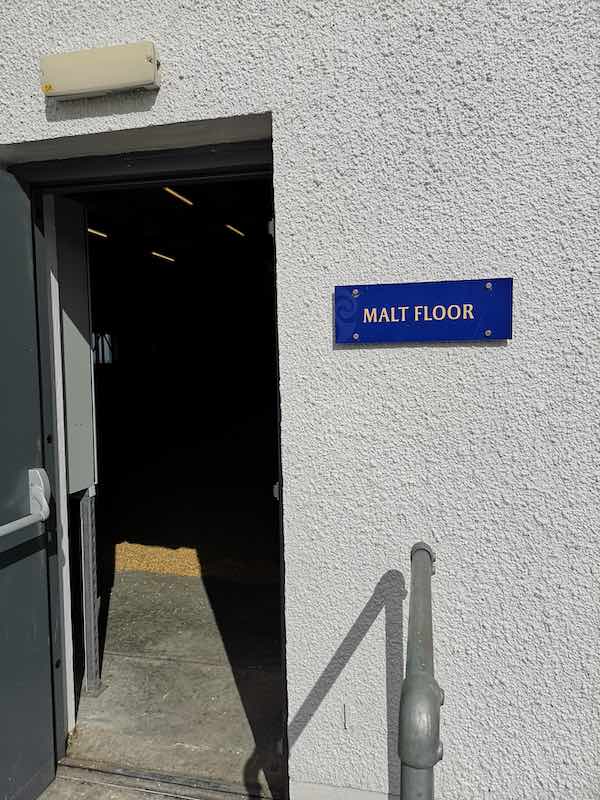
Entrance to the Malt Room
Kilchoman does some of their maltings onsite using Islay grown barley from the nearby Rock Side farm. Roughly 30% of the distilled spirit comes from Islay grown barley, while the rest comes from Port Ellen Maltings. Each malting is carried out in the traditional way of spreading the barley on the floor for germination to take place.
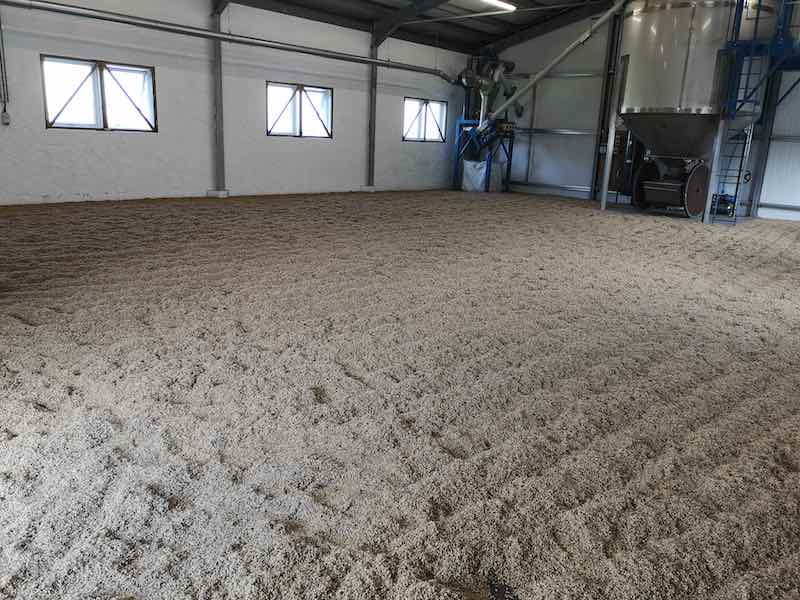
Traditional Malting Floor
Workers malt around 40 tons of barley at a time, by steeping them in water and allowing for 5-7 days of germination and drying.
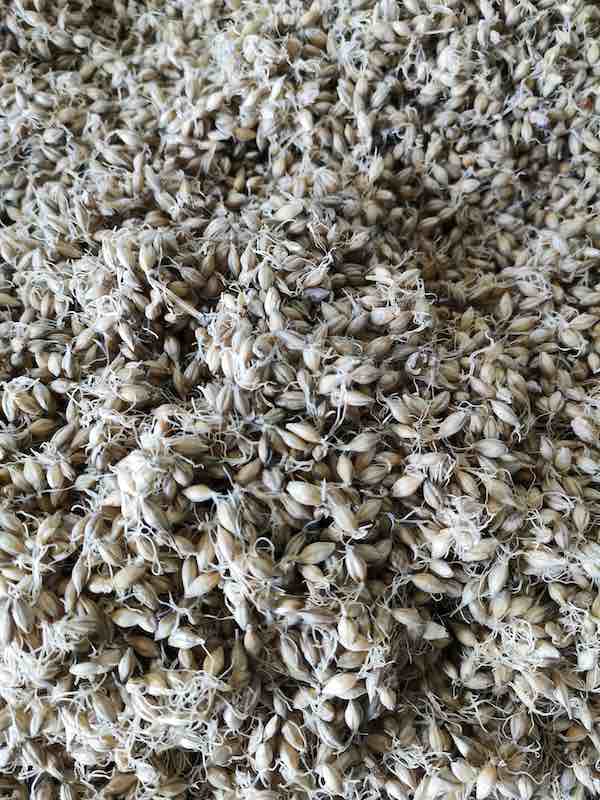
Barley germination in progress
During the germination, the plant shoot, or acrospire, will start growing. The malting is complete once the acrospire grows to around three quarters or more of the length of barley. Once the maltsters see that the barley is ready, they will start the kilning process.
Second Stop – The Kiln
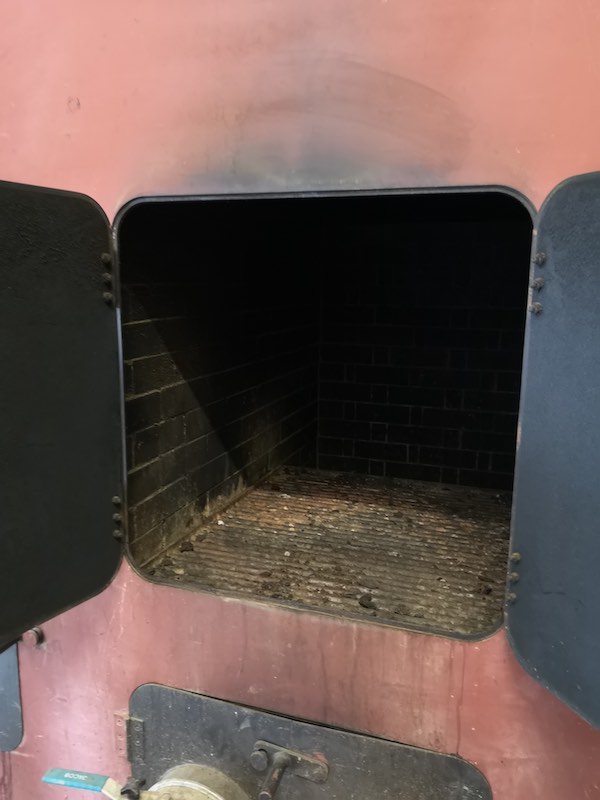
The Kiln
The kilning begins by igniting dry peat to get the fire going before adding wet peat to create peat smoke. The workers will smoke the barley for 10 hours and leave it to dry until the malt reaches 5% moisture content. This malting onsite leads to a 20ppm phenol content in the Islay malt. To follow the traditional way of malting, Kilchoman lets the barley rest for four days after kilning and before milling them for mashing and fermentation.
Third Stop – The Still House
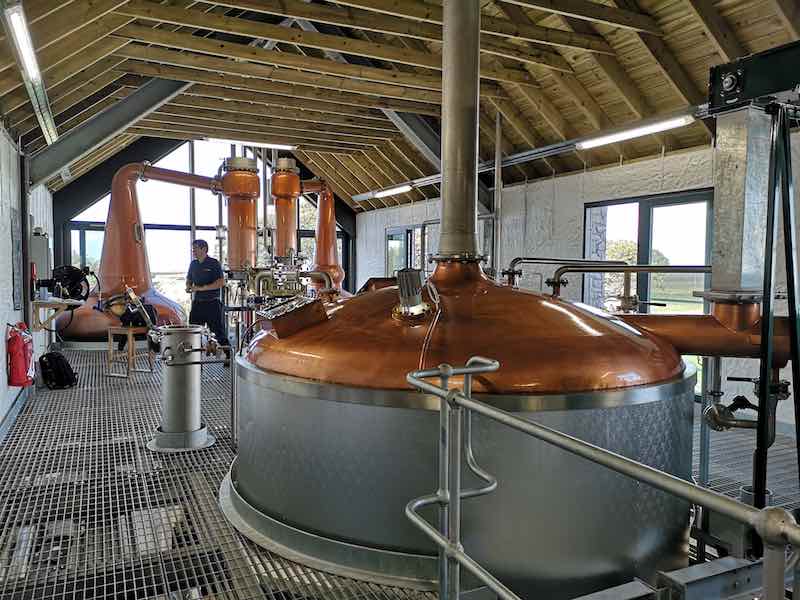
The Still House
Kilchoman is a farmhouse distillery, which means that space is limited. To make work effective, the mash tun, washbacks and stills are placed in the same location.
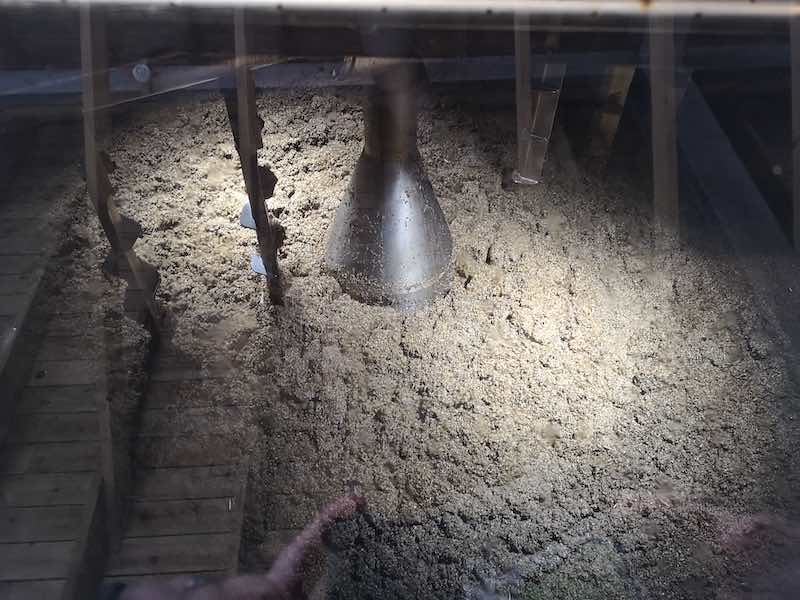
After milling, 1.2 tonnes of grist goes into the mash tun. To extract the sugars, the workers add three streams of hot water at 56degC, 85degC and 95 degC. 6000L of sugary liquid, or wort, goes into the washbacks, along with 20kg of dry yeast. This wort is then left to ferment for approximately 84 hours to become wash, a strong beer at 6-8% abv.
Our tour guide asked if we would like to try the “Kilchoman beer” and proceed to pour us some when she got a resounding “YES!”
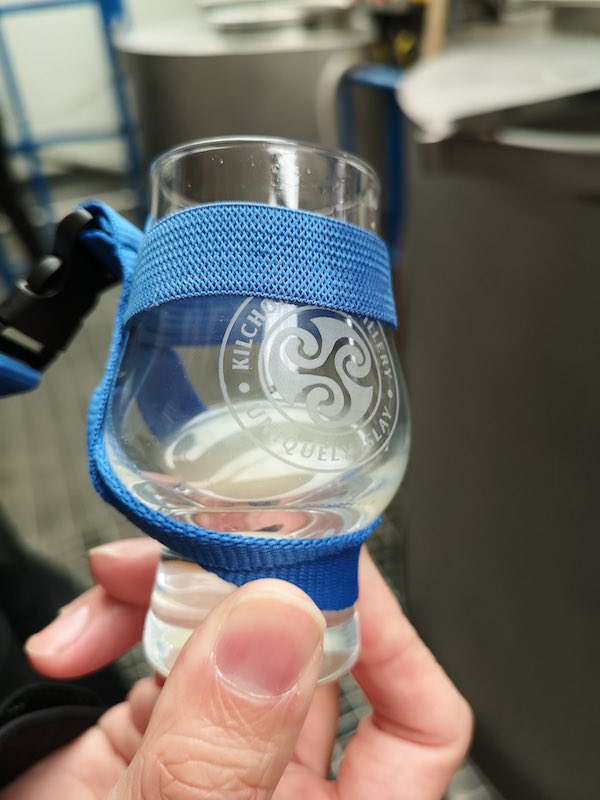
The Kilchoman Beer
The wash tasted sweet, with a yeasty, lightly fizzed note at the back. It was good! So good that we asked for a second helping. Personally, I think that Kilchoman should consider making their own beer. I would buy them if they make it!
The Distillation
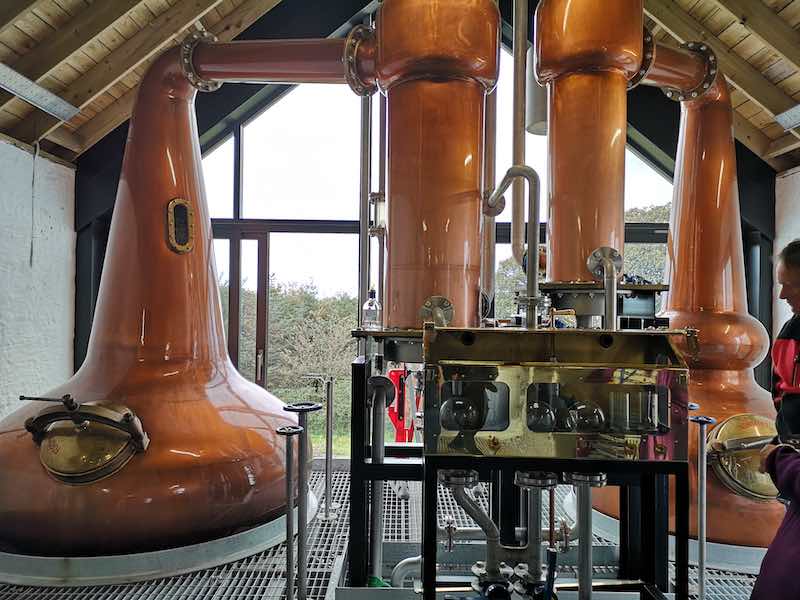
The Stills
Since the stills are pretty small, only 3000L of wash goes into the wash still at a time. After the first distillation, 1000L of low wines at approximately 19% abv goes into the spirit still for the second distillation. The remaining 2000L became pot ale, which is used to fertilise the crops at Rock Side Farm. Pot ale is useless for making whisky, but its organic compounds made them perfect as fertilisers.
The low wines from the wash still, and the heads and tails from previous distillations are then added into the spirit still at approximately 26% for the second distillation. Kilchoman takes the cut of the heart between 76% and 65%; this means any distillate above 76% are foreshots, and any distillate below 65% are feints. These foreshots and feints are added to the low wines in the next distillation. After 3.5 hours of distillation, the spirit still produces 3.5 litres of spirit, which will be watered down to a filling strength of 63.5%.
Fourth Stop – Not the Warehouse
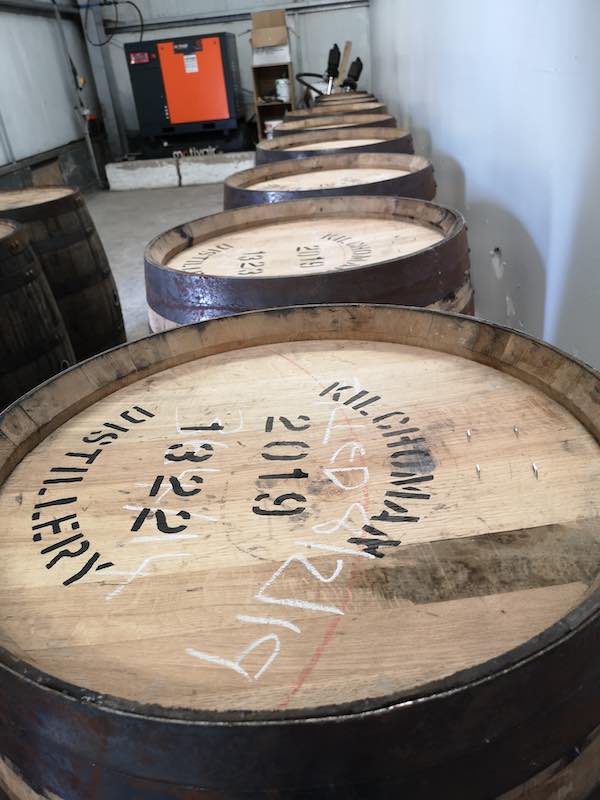
Sample Casks
Unfortunately, Kilchoman distillery has a policy that does not allow visitors to see their warehouse. It is due to safety reasons though; they have nothing to hide! Instead, we got to see some sample casks which the tour guide explained their way of storage before she led us to the next exciting part of the distillery tour.
Fifth and Final Stop – The Bottling Plant
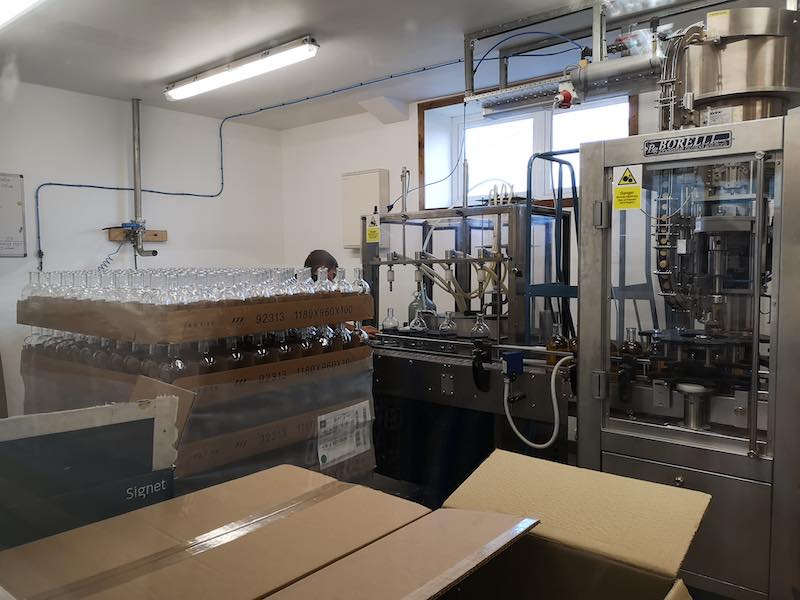
The machine that helps to bottle Kilchoman Single Malt
The bottling process is a combination of manual and machine work. The bottling team needs to ensure the cleanliness of the bottles before feeding them to the machine, which will do the bottling. In the above picture, you can see the process of filling the bottle. The filled bottles then passed through the glass portion of the machine where the cork gets fixed onto the bottle. The final process gets the bottles sealed and labelled! The bottling team then completes the process by putting the bottles into their boxes and packed them into cases of six.
End of the Tour – Back at the Distillery Shop
Our tour guide led us back to the distillery shop and ended the tour. You must be surprised to see that we did not appear to taste any Kilchoman whisky. We did! It just did not flow nicely in the narratives earlier. We had a Sanaig in the malting room and it was surprisingly good! We got to admit that we are not big Kilchoman fans largely because we find it spicy, but the Sanaig was really awesome.
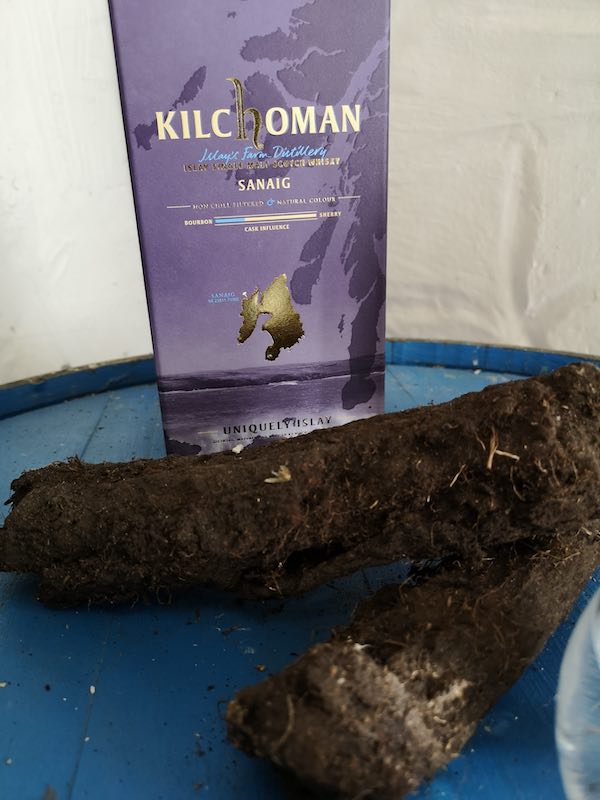
Sanaig and peat
Back at the shop, we considered having a meal at Kilchoman because we heard that the food was awesome! Alas, we cannot, as we needed to move on to the next distillery. Nonetheless, we had enough time to explore the little farmhouse at the back of the distillery and the below pictures were what we found!
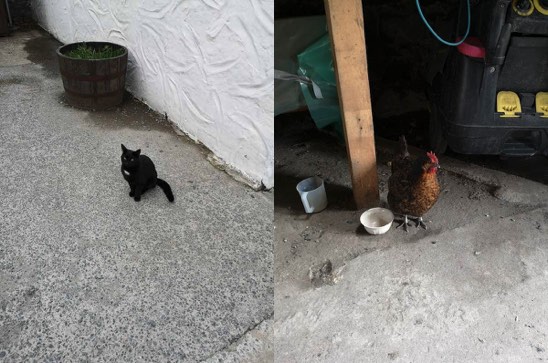
The Kilchoman Cat and Hen
There were some other hens running around but they ran away when they saw us. Hahaha…
It was a fantastic visit to Kilchoman, and we look forward to seeing more of them after their expansion.


